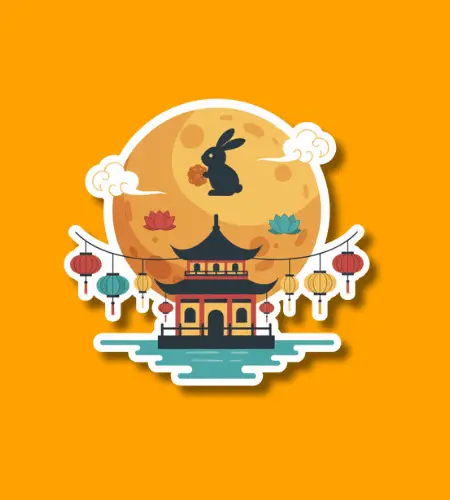The Mid‑Autumn Festival (also called the Moon Festival or Mooncake Festival) is celebrated in China on the 15th day of the 8th lunar month, when the moon is believed to be fullest and brightest. It usually falls between mid‑September and early October in the Gregorian calendar, and in 2025 it will occur on October 6.
Table of Contents
History of Mid-Autumn Festival
The roots of the Mid‑Autumn Festival stretch back over three thousand years, to the time when people in China worshipped celestial cycles and offered sacrifices to the moon in hopes of harmony and a good harvest. During the Zhou dynasty, moon rituals and seasonal observances were already becoming part of the cultural fabric, though the festival was not yet formalized.
Over subsequent dynasties, especially during the Tang and Song eras, the festival grew in social importance. Emperor Xuanzong of the Tang dynasty is sometimes credited with hosting formal moon-viewing events at court, and by the Song dynasty the Mid‑Autumn celebration had become deeply embedded in folk culture. As the centuries passed, regional customary practices—moon worship, lanterns, mooncakes, folk tales—became layered over the core observance of reunion and gratitude for the harvest.
Why is Mid-Autumn Festival important?
The Mid‑Autumn Festival resonates with people because it combines cosmic symbolism with human longing. The full moon is often seen as a symbol of unity and completeness, and gathering under the moonlight stirs a sense of connection—among family members, across distances, and even across time. This festival gives voice to a shared human impulse: to pause, look up, and remember.
Moreover, beyond family ties, the festival offers an opportunity to express gratitude. It is a moment to recognize the fruits of one’s labor, to reflect on blessings, and to hope for abundance ahead. In agrarian societies, the timing aligns naturally with harvest season, making it a moment to celebrate the earth’s generosity. In modern life, that agricultural link has shifted, but the emotional core remains: reunion, thanks, and shared joy.
Some of its deeper resonances include
- Putting family and reunion at the heart of a festival
- Using lunar symbolism to bridge distance and longing
- Giving thanks for abundance and sustenance
- Encouraging reflection under the same sky
- Passing on folk stories and traditions across generations
How to Celebrate Mid-Autumn Festival
Celebrating Mid‑Autumn doesn’t require grand effort—this is a festival of simplicity, reflection, and togetherness. The evening itself is ideal for gathering your household (or close friends), sharing a meal, bringing out mooncakes, and stepping outside to admire the moon. Let the sky draw you into conversation, memory, and wonder. In urban settings, rooftop terraces, balconies, or even parks make for good vantage points.
You could also craft or carry lanterns—it’s a tradition especially loved by children. Lanterns may be simple or elaborate; in some places people float them, in others they walk under them. Lighting lanterns is both decorative and symbolic: a small light under vast darkness. If you have more time, making (or buying) mooncakes to share is a meaningful way to participate in the festival’s culinary core. Even giving a mooncake to a neighbor or friend becomes a gesture of connection.
Here are a few simple ideas you might try
- Sit outdoors after dinner with mooncakes and tea and gaze at the moon together
- Give or exchange mooncakes as gifts with people you care about
- Make (or buy) a lantern, turn it on, and walk with it or hang it in a visible place
- Recite or read a moon-themed poem (ancient or modern) under the moonlight
- Share stories about ancestors, loved ones far away, or personal hopes
Subscribe to our newsletter and never miss a holiday again!

